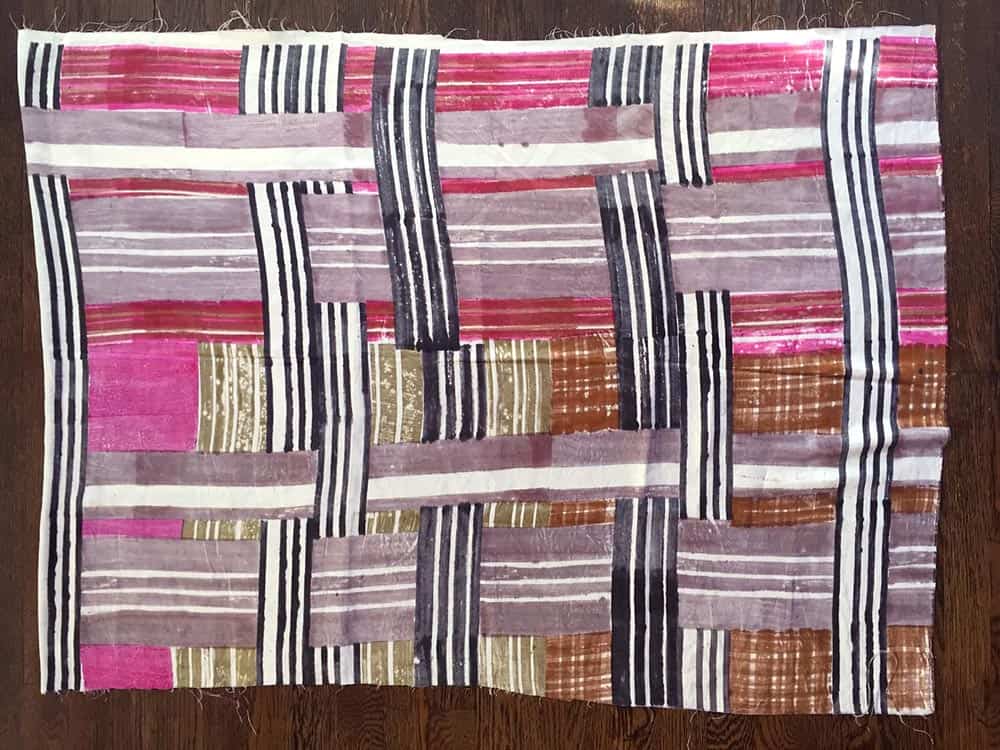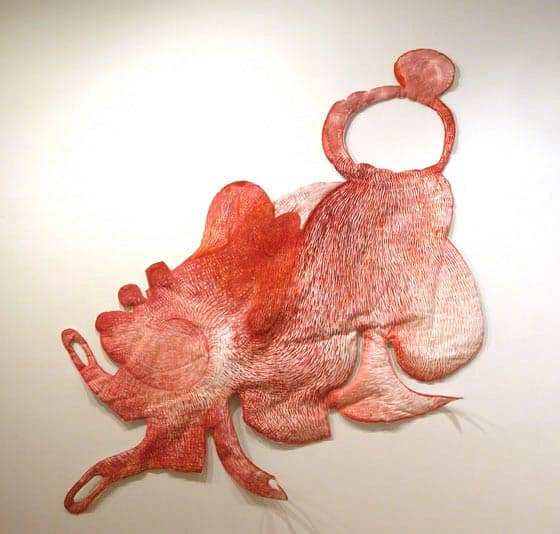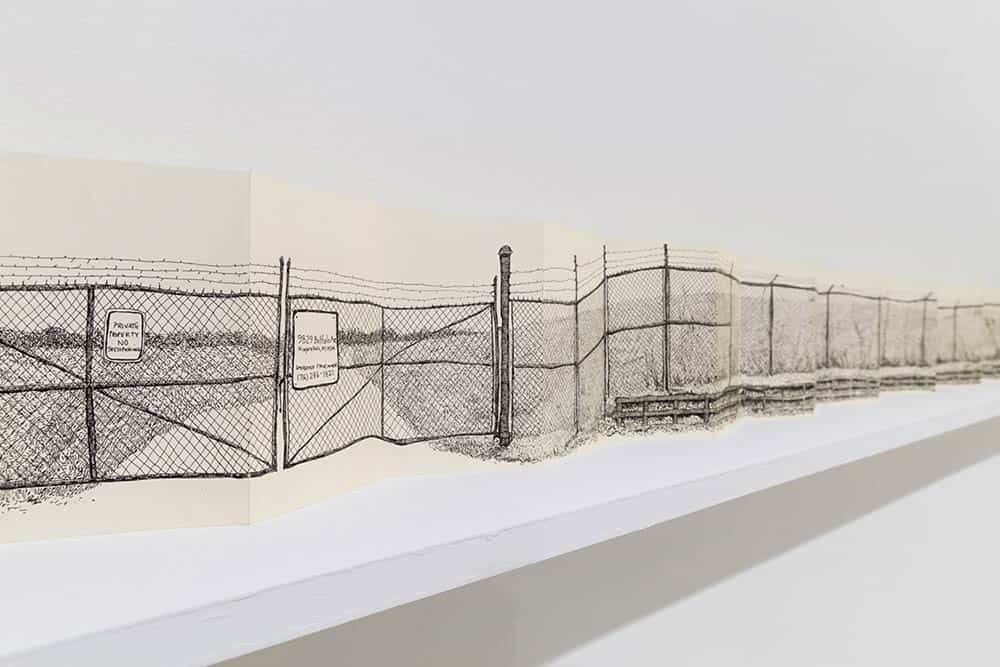Joan Linder on Miriam Dym
History aside, when I think of an artist whose work I admire and who has had immeasurable impact on my work, I think of Miriam Dym. We met in graduate school nearly two decades ago. She has a particular, and idiosyncratic, vision that engages abstraction in a fundamental(ist) way, meddles with the process of painting, wrestles with text and, ultimately, champions engaged materialism. Friends and mutual interlocutors, Miriam and I have shared countless conversations, an apparently endless back-and-forth, about art, painting, images and pictures, materials and matter, invention and constructs.
Following Miriam’s timeline (which she turned into an online artwork) I’ve had the pleasure, and sometimes bemusement, of witnessing an artistic output that has shifted among different media (oil paintings on wood, large-scale digital prints in an era when that was barely possible, oversize ink drawings of invented factories, aggregations of trash and dubious materials processing, billboard-sized text painting, and lots and lots of sewing). In her early twenties, she made painterly, sci-fi and mechanics-influenced abstractions; in her late twenties, cutting-edge computer-based prints and room-scale installations—including a map room with custom scooters for viewers to ride and a meticulously crafted how-to manual to re-create the room, should you want to.
Miriam had a strong reaction to what she felt was extravagant and excessive in the fabrication of this digital-print installation work. In her mid thirties, she began aggregating her own trash, processing it to a near-approximation of raw materials to make into art that doubled as functional, if awkward, objects. Calling attention to her means of production and material sources, she mended or completely deconstructed unwanted clothing, only to make new clothing, wearable at best for unscripted performance, or to use as storage containers for her materials and projects. Her paintings embedded themselves in the reality outside the studio, in the performance of life. With and from the objects, she began to note the systems of materials that move not only through an artist’s life, but through everyone’s.
In Dym’s world, mark, form and text are the primary means as well as the underlying concepts. An unidentifiable form might be filled with marks, and conversely the marks are also made of forms. Drawn and painted text animate object and materials; rooms speak through furniture and clothed inhabitants. Text becomes mark as hand-painted stripes affirm the artist and human presence within abstraction. Dym’s own house, which is also her studio, workshop, showroom, and business office, is her Merzbau. She works in a place where art and life are inseparable. Currently, Dym has conceptually (and functionally) engaged the world of commerce with Dym California Textiles, a business that produces dye-based block-printed cloth conveniently adaptable to domestic interiors and gallery walls and also with her project Logo Removal Service. In these instances, art is product and product is art, both circulating like real life in our late-Capitalist era.
Joan Linder’s large-scale images of quotidian subjects, created from thousands of tiny marks, find inspiration from her immediate surroundings. She lives and works in Buffalo, NY, where she is an associate professor at the University at Buffalo, SUNY. In 2015 she had solo exhibitions at Mixed Greens Gallery (New York, NY) Fiendish Plots (Lincoln, NE), and Nina Freudenheim Galley (Buffalo, NY). More information can be found at joanlinder.com.
Miriam Dym’s website is dymproducts.com.
Photo credits: Miriam Dym, Don’t Forget to Ask for Directions (mixed-media installation with digitally printed floor, screen-printed curtains, trucks with slipcovers, and more), 1999



Wow. I love Miriam Dym’s work. Thank you for letting us in on another wonderful artist I was not aware of.